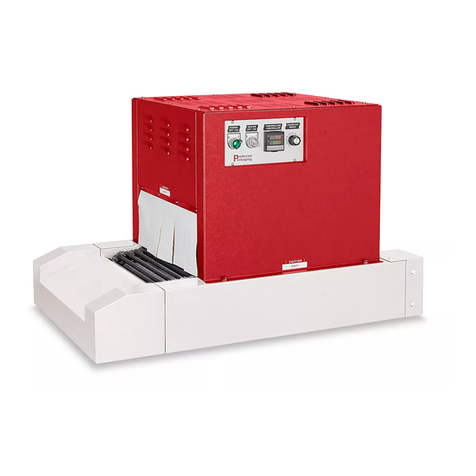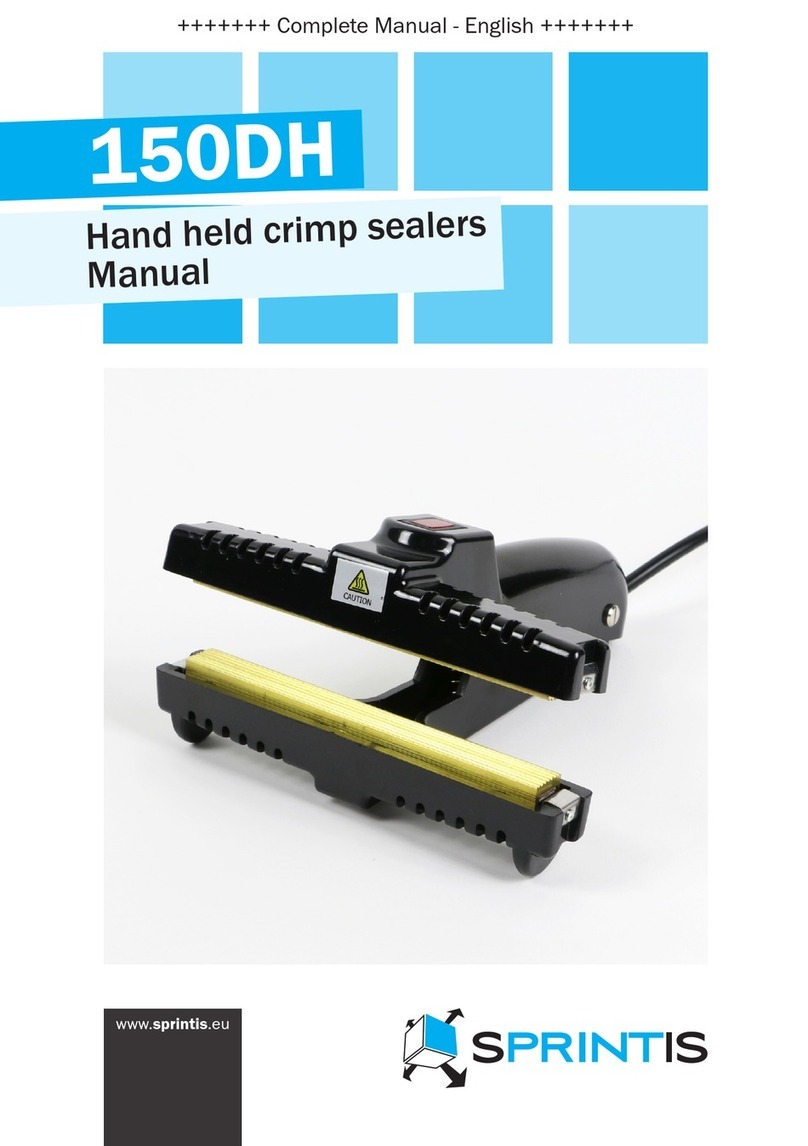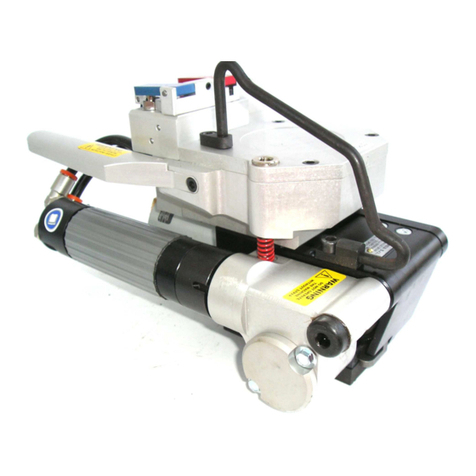Hamilton Beach HVS400 Instruction Manual

ENG-FRM-RIC-4.32, Rev. E
Technical Data Sheet
HVS400
ROPRIETARYRIGHTS NOTICE This document and all information contained within itis the property of Hamilton Beach Brands, Inc. (HBB). Itisconfidential and
proprietaryandhasbeenprovidedtoyouforalimitedpurpose. Itmustbereturnedordestroyeduponrequest. Disclosure,reproductionoruseofthisdocumentand
anyinformationcontainedwithinit,infullorinpart,foranypurposeisforbiddenwithoutthepriorwrittenconsentofHBB. Nophotographsmaybetakenofanyarticle
fabricated or assembled from this document without the prior written consent of HBB.
-Symptom: The Vacuum Sealer does not operate when it is plugged in and turned on.
-Cause: Bad outlet. Try connecting the power cord plug to another electrical outlet.
-Cause: Damaged power cord. Make sure the power cord is not damaged.
DO NOT use a damaged power cord. Call Customer Service for information on part
replacement.
-Cause: Loose power cord. Make sure the Connector at the end of the power cord is securely plugged
into the power cord port on the side of the unit.
-Cause: The 10 Amp fuse may be blown. Results in no lights illuminated on the control panel.
The Fuse is located on the right side of the unit directly above the Power Cord Port.
To check the fuse:
Turn "OFF” (0) and unplug the Vacuum Sealer.
Twist off and remove the Fuse Cap.
Remove and check the Fuse. The thin metal band in the center of the Fuse should be
clean and unbroken, if broken replace. Only replace fuse with a 10-ampere cartridge fuse.
Replace the Fuse Cap.
-Symptom: The vacuum sealer shut off and will not turn on again.
-Cause: The 10 Amp fuse may have blown. If there are no lights illuminated on the control panel check
the fuse and replace as needed.
-Cause: The thermal overload protector may have been activated. In this case, allow the vacuum
sealer to cool by opening the vacuum chamber lid for approximately 20 minutes.
TIP: To prevent the vacuum pump from overheating, be sure to leave the vacuum chamber
lid open for approximately 20 seconds between uses.
-
Symptom: The sealing bar melts through the bag.
-
Cause: The seal bar tape strips may be worn or damaged. Check the condition of the tape and replace if
damaged or worn.
-
Cause: The seal bar may be too hot, open the vacuum chamber lid and allow the sealing bar to cool for
5–10 minutes.
TIP: Always leave the vacuum chamber lid open between bags and allow at least 20 seconds
between cycles.
NOTE: The vacuum sealer is only intended to be used with vacuum-sealing bags. Only heat-seal
bags should be used.
DO NOT USE HOUSEHOLD PLASTIC BAGS with the vacuum sealer.
4421 Waterfront Drive
Glen Allen, VA 23060
Revision Description:
Production Release.
Request Number:
DOC7195
Revision Date:
11/2/2016
Approved by:
DOC7195
Issue Code(s):
Page:
1 of 6
Document #:
520008400
Rev:
A

Technical Data Sheet
HBH550
ENG-FRM-RIC-4.32, Rev. E
PROPRIETARY RIGHTS NOTICE This document and all information contained within it is the property of Hamilton Beach Brands, Inc. (HBB). It is confidential and
proprietary and has been provided to you for a limited purpose. It must be returned or destroyed upon request. Disclosure, reproduction or use of this document and
any information contained within it, in full or in part, for any purpose is forbidden without the prior written consent of HBB. No photographs may be taken of any article
fabricated or assembled from this document without the prior written consent of HBB.
-Symptom: The bag does not seal.
-Cause: The Seal Bar Heating Element may be damaged. Carefully peel back the tape covering the heating
element and visually check for damage. Replace in needed.
NOTE: Damage is more likely to occur at the crimps on each side of the heating element.
-Cause: Loose power connection. Check the seal bar quick connect on the PCB.
-Cause: Bad interlock switch. The interlock switch that prevents the heater from being activated when the
vacuum chamber lid is open may be damaged, using a multimeter verify the switch is functioning
properly. See repair guide below.
-Cause: No power to Seal Bar Heating Element.
1)
Remove the upper housing (see repair guide below)
2)
Simulate a sealing cycle by running the unit without a bag.
After the Vacuum indicator goes out on the control panel the Seal Bar Element should energize,
using a multimeter measure the voltage at the heating element quick connect on the PCB
(labeled X5 SEAL). You should measure approximately 27VAC. If no voltage is present,
replace the transformer.
-Symptom: The bag seal pulls apart.
-Cause: The seal of the bag may be incomplete. If the seal has a crease in it, or if a liquid or powder has
been trapped between the layers of the bag, the layers may not have been sealed together
properly. Cut off the seal and wipe the inside of the bag clean, then try to vacuum-seal the bag
again.
TIP: When sealing a moist or powdery food, you can double seal the bag by pulling the bag
out of the chamber slightly then sealing the bag again.
-Symptom: The vacuum pump starts, but no air is being removed from the heat-seal bag.
-Cause: Vacuum chamber not sealing. Make sure to firmly press down on the vacuum chamber lid
throughout the vacuum-sealing process.
-Cause: Damaged vacuum chamber seals. Visual inspect the seals for damage, replace as needed.
-Cause: Improper bag insertion. The open end of the bag should be centered within the vacuum chamber.
Make sure the bag does not to cover the vacuum ports in the vacuum chamber. If you are using a
bag that was made from a roll of material, double-check that the end of the bag is sealed.
-Cause: Damaged bag. Check for tears or punctures in the bag. If there is a leak in the bag, air will be
pulled into the bag from the outside.
TIP: For best results, use Hamilton Beach Heat-Seal bags.
-Symptom: Air is being removed from bag but it appears to be leaving more air in the bag that usual.
-Cause: Damaged exhaust valve, replace as needed.
-Symptom: No air is pulled out of the bag and the Vacuum pump does not appear to be working. (no sound
after pressing start).
-Cause: Damaged vacuum pump. To verify, first visually inspect and secure all connectors then use a
multimeter to measure the voltage present at the vacuum pump quick connect on the PCB (labeled
X4 pump). You should measure approximately 120 VAC. If voltage is present but the vacuum
pump does not run, replace vacuum pump.
-Symptom: Noise can be heard coming from the machine when it is not in use.
-Cause: The machine is equipped with a cooling fan for the electronics and vacuum pump that runs when
it is plugged in and powered on.
TIP: When not in use, turn the machine off and unplug.
4421 Waterfront Drive
Glen Allen, VA 23060
Revision Description:
Request Number:
Revision Date:
10/19/2016
Approved by:
Issue Code(s):
Page:
2 of 6
Document #:
Rev:
A

Technical Data Sheet
HBH550
ENG-FRM-RIC-4.32, Rev. E
PROPRIETARY RIGHTS NOTICE This document and all information contained within it is the property of Hamilton Beach Brands, Inc. (HBB). It is confidential
and proprietary and has been provided to you for a limited purpose. It must be returned or destroyed upon request. Disclosure, reproduction or use of this
document and any information contained within it, in full or in part, for any purpose is forbidden without the prior written consent of HBB. No photographs may be
taken of any article fabricated or assembled from this document without the prior written consent of HBB.
Upper Housing Disassembly
Repair Guide
1-
Using a Phillips head screwdriver remove the 11 screws that secure the upper housing.
2-
Carefully lift up on the side of the upper housing closest to the power switch to partially to expose the control
panel/ PCB wiring and quick connect plug.
3-
Disconnect the control panel quick connect plug from the PCB, then lift off the upper housing.
STEP 1
Remove
screws
STEP 2
Slightly lift to expose
cable
STEP 3
Disconnect cable
Upper Housing Removed
4421 Waterfront Drive
Glen Allen, VA 23060
Revision Description:
Request Number:
Revision Date:
10/19/2016
Approved by:
Issue Code(s):
Page:
3 of 6
Document #:
Rev:
A

ENG-FRM-RIC-4.32, Rev. E
Technical Data Sheet
HBH550
PROPRIETARY RIGHTS NOTICE This document and all information contained within it is the property of Hamilton Beach Brands, Inc. (HBB). It is confidential and
proprietary and has been provided to you for a limited purpose. It must be returned or destroyed upon request. Disclosure, reproduction or use of this document
and any information contained within it, in full or in part, for any purpose is forbidden without the prior written consent of HBB. No photographs may be taken of any
article fabricated or assembled from this document without the prior written consent of HBB.
Replacing the Oval Vacuum Chamber Seals:
1.
Turn “OFF” (0) the Vacuum Sealer and unplug from the electrical outlet.
2.
Make sure the unit is completely cool.
3.
Open the Vacuum chamber lid.
4.
Pull the Oval Vacuum Chamber Seal out from its seating channel on the underside of the Vacuum
chamber lid.
5.
Place the new seal into the seating channel then firmly compress the seal against itself as you press the
seal into the channel of the Vacuum Chamber lid.
6.
Repeat process for the Vacuum Chamber Lower Seal
Replacing the Lower(15mm) Seal Bar Tape:
1.
Turn “OFF” (0) the Vacuum Sealer and unplug from the electrical outlet.
2.
Make sure the unit is completely cool.
3.
Open the Vacuum chamber lid.
4.
Lift up and pull to remove the 15 MM Seal Bar Tape covering the Seal Bar Heating Element.
5.
Remove the backing from the new 15 MM Seal Bar Tape.
Caution: Do not allow the tape to contact anything while the adhesive is exposed.
6.
Place the edge of the tape on the left-outermost edge of the vacuum chamber then press down on the
tape and slide your finger to the right, making sure there are no wrinkles or folds in the Seal Bar Tape.
Make sure the Seal Bar Heating Element is completely covered by the tape.
Replacing the Upper (10 MM) Seal Bar Tape:
1.
Turn “OFF” (0) the Vacuum Sealer and unplug from the electrical outlet.
2.
Make sure the unit is completely cool.
3.
Open the Vacuum chamber lid.
4.
Lift and pull the 10 MM Seal Bar Tape covering the upper seal.
5.
Remove the backing from the new 10 MM Seal Bar Tape
Caution: Do not allow the tape to contact anything while the adhesive is exposed.
6.
Place the tape on the left edge of the seal then press and slide your finger to the right making sure
there are no wrinkles or folds in the Seal Bar Tape.
4421 Waterfront Drive
Glen Allen, VA 23060
Revision Description:
Request Number:
Revision Date:
Approved by:
Issue Code(s):
Page:
4 of 6
Document #:
Rev:
A

ENG-FRM-RIC-4.32, Rev. E
Technical Data Sheet
HBH550
PROPRIETARY RIGHTS NOTICE This document and all information contained within it is the property of Hamilton Beach Brands, Inc. (HBB). It is confidential and
proprietary and has been provided to you for a limited purpose. It must be returned or destroyed upon request. Disclosure, reproduction or use of this document
and any information contained within it, in full or in part, for any purpose is forbidden without the prior written consent of HBB. No photographs may be taken of any
article fabricated or assembled from this document without the prior written consent of HBB.
Replacing the Sealing Bar Heating Element:
1. Peel back the Lower Seal Bar Tape to expose the heating element.
TIP: The screw bosses that secure the heating element are spring loaded to keep tension on the
heating element, so once you remove a screw the boss will retract slightly into the housing.
To avoid this and make it easier to reinstall the screws after replacing the heating element, place an object
such as an ink pen or pencil into the void between the screw boss and the housing to hold the boss in
place. (pictured below) When securing the new heating element the object inserted into the void can be
used to help guide the scew boss to the screw.
2. Using a Phillips head screwdriver, remove the two screws securing the heating element.
3. Install the new Seal Bar Heating element
4. In not damaged, reinstall the seal bar tape making sure to completely cover the heating element. Replace the
the tape if it is damaged or no longer adheres.
Checking the Vacuum Chamber Interlock switches
1.
Turn “OFF” (0) the Vacuum Sealer and unplug from the electrical outlet.
2.
Make sure the unit is completely cool.
3.
Remove the upper housing
4.
Disconnect the interlock quick connect plug
5.
Using a multimeter check for continuity through the interlock switches at the quick connect plug (pictured below).
You should measure continuity through the switch with the vacuum chamber lid open (approximately .5 Ohms) and
see an open circuit once the vacuum chamber lid is closed.
4421 Waterfront Drive
Glen Allen, VA 23060
Revision Description:
Include clearer photos of switches/wiring
Request Number:
Revision Date:
Approved by:
Issue Code(s):
Page:
5 of 6
Document #:
Rev:
A

ENG-FRM-RIC-4.32, Rev. E
Technical Data Sheet
HBH550
PROPRIETARY RIGHTS NOTICE This document and all information contained within it is the property of Hamilton Beach Brands, Inc. (HBB). It is confidential and
proprietary and has been provided to you for a limited purpose. It must be returned or destroyed upon request. Disclosure, reproduction or use of this document
and any information contained within it, in full or in part, for any purpose is forbidden without the prior written consent of HBB. No photographs may be taken of any
article fabricated or assembled from this document without the prior written consent of HBB.
Replacing the Vacuum Chamber Interlock Switches:
1.
Turn the unit upside down then remove the 8 Phillips head screws.
2.
Return the unit to right side up.
3.
Carefully lift the Vacuum chamber out of the housing then turn it upside down to expose the
interlock switches.
4.
Press the tabs on the side of the switch housing to release, then push the switches through the housing.
5.
Install New switches then reassemble the unit in reverse order.
PCB Layout:
4421 Waterfront Drive
Glen Allen, VA 23060
Revision Description:
Request Number:
Revision Date:
Approved by:
Issue Code(s):
Page:
6 of 6
Document #:
Rev:
A
Other manuals for HVS400
1
This manual suits for next models
1
Table of contents
Popular Packaging Equipment manuals by other brands
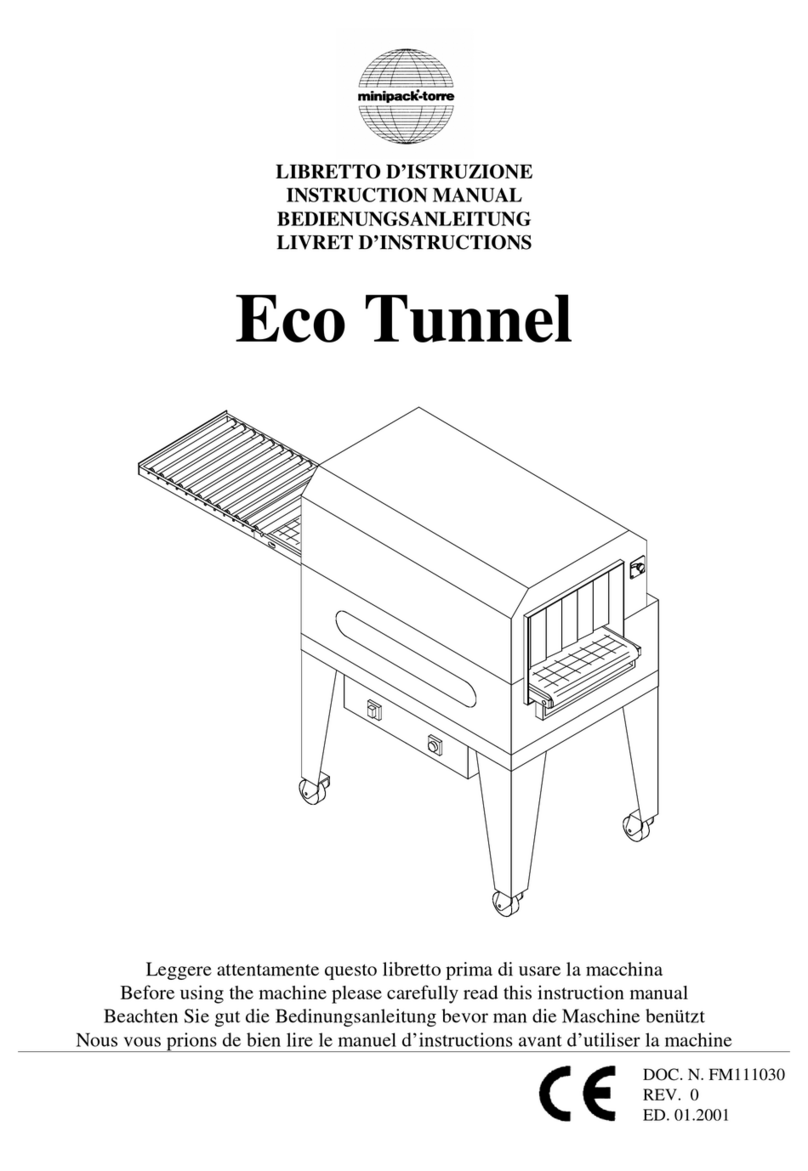
Minipack-Torre
Minipack-Torre Eco Tunnel instruction manual

Powerfix
Powerfix HG00921A Operation and safety notes
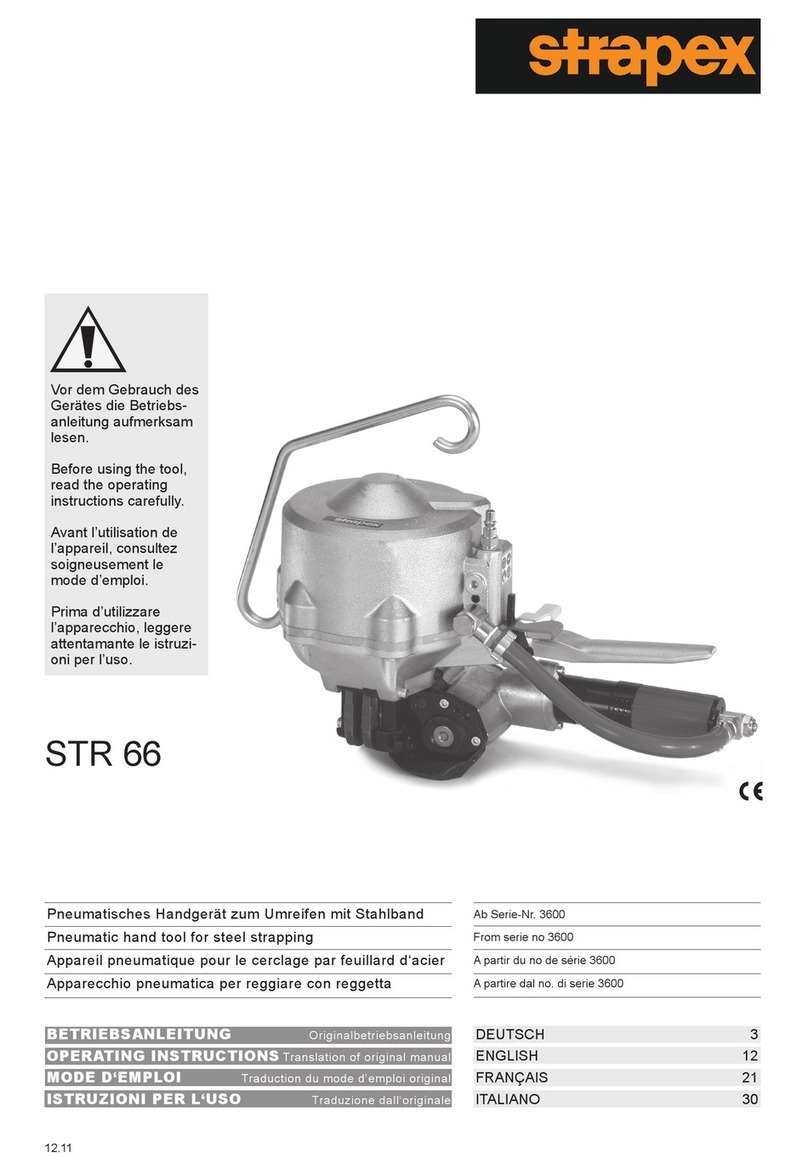
strapex
strapex STR 66 operating instructions

Berkel
Berkel 09-8799-6000 operating manual
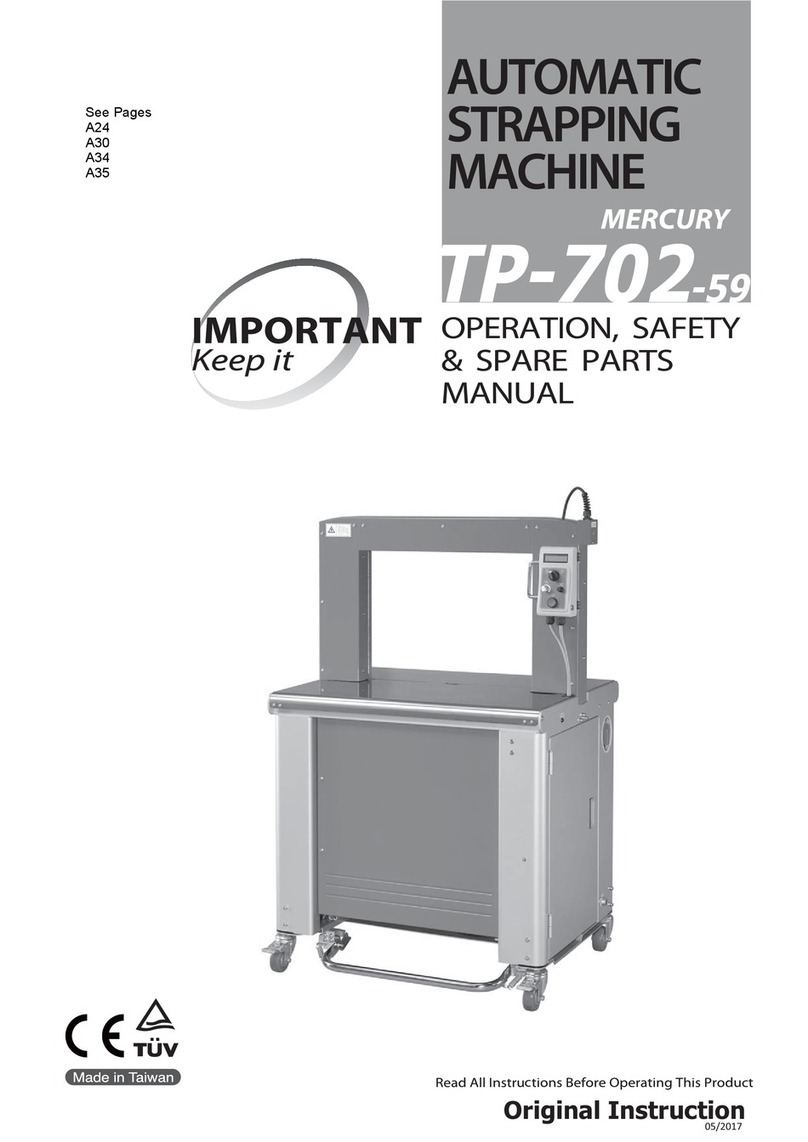
Transpak
Transpak MERCURY TP-702-59 Original instruction

Signode
Signode TENSION-WELD VFX-9/13 Operation, parts and safety manual
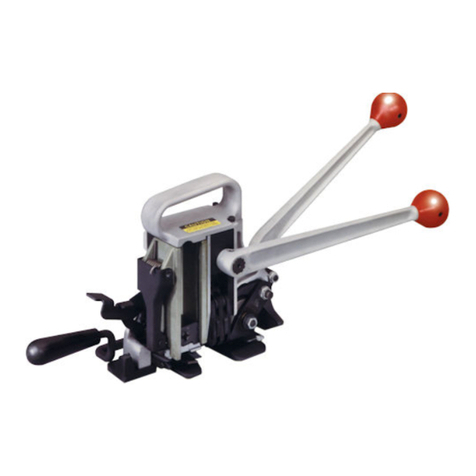
Signode
Signode AM Series Operation, parts and safety manual
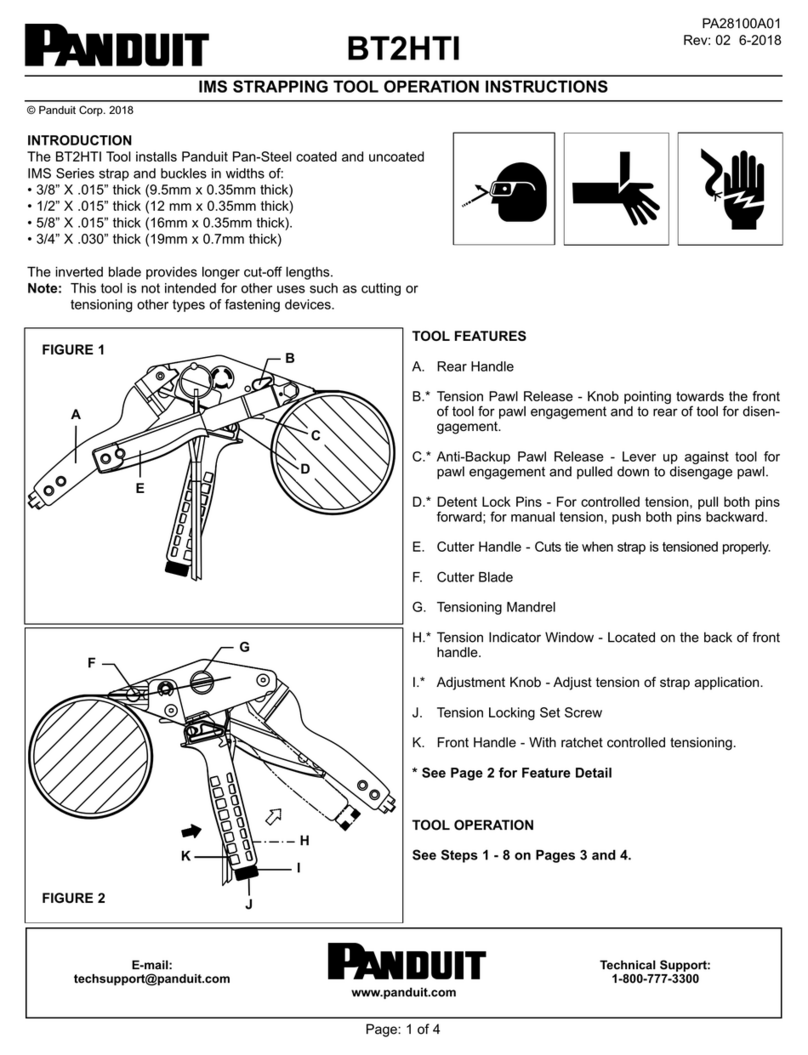
Panduit
Panduit BT2HTI Operation instructions

Better Packages
Better Packages PS2A Operator's manual
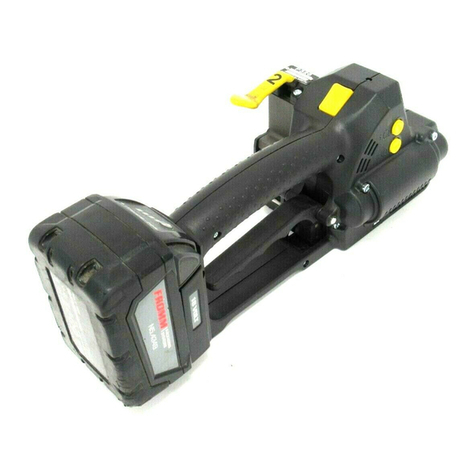
Fromm
Fromm P326 Operation manual & spare parts list
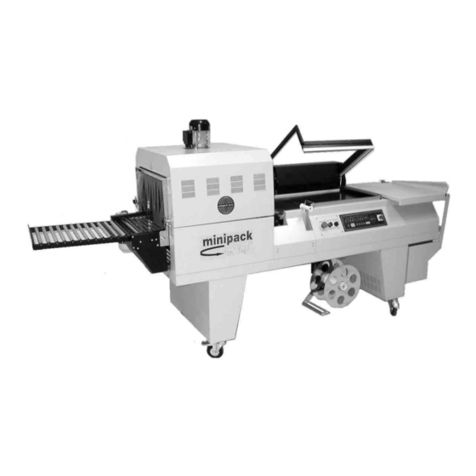
Minipack-Torre
Minipack-Torre MEDIA MATIC 50 instruction manual

U-Line
U-Line H-109 instructions
